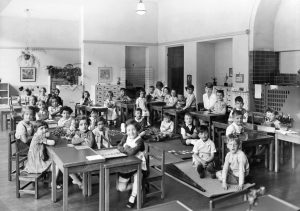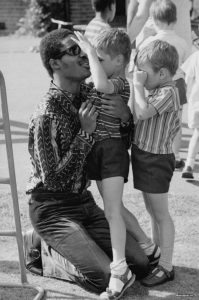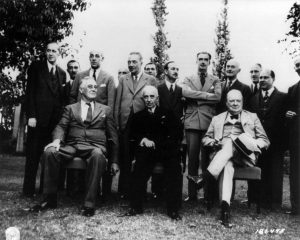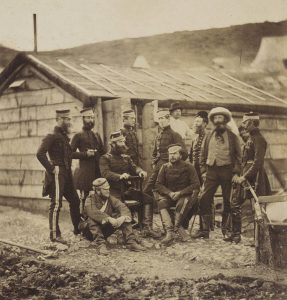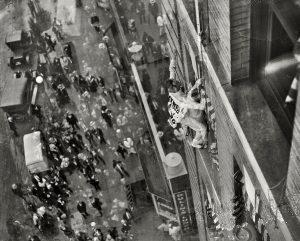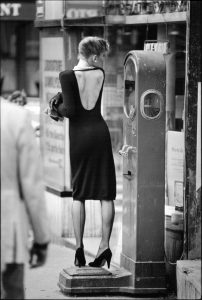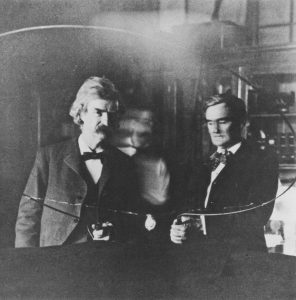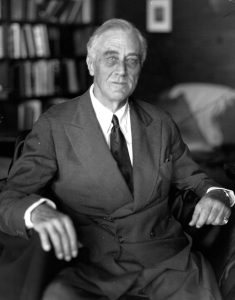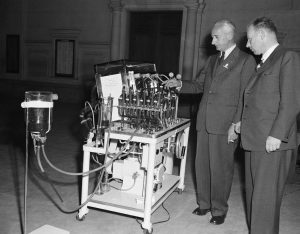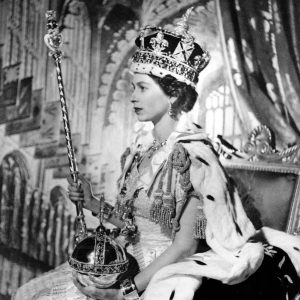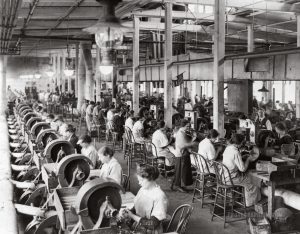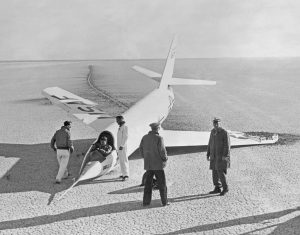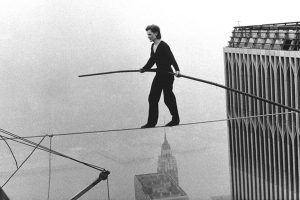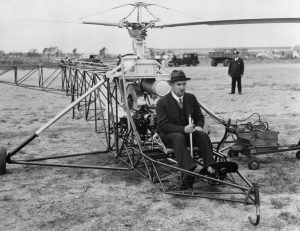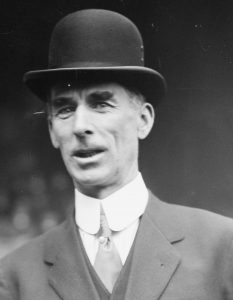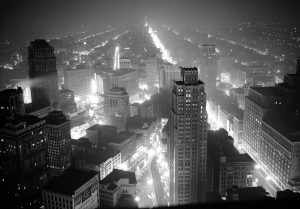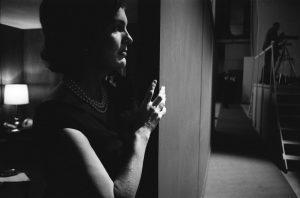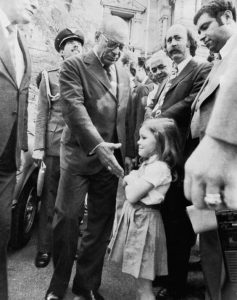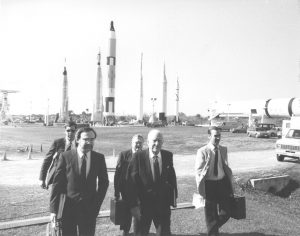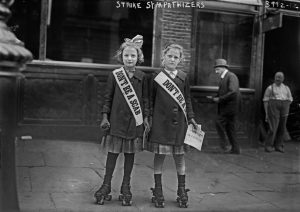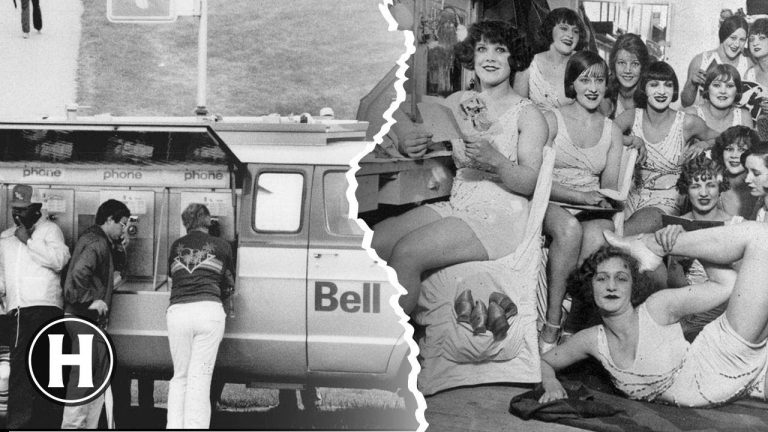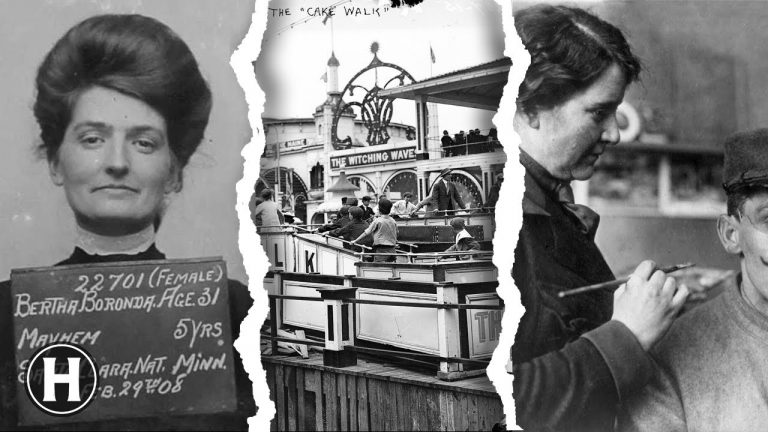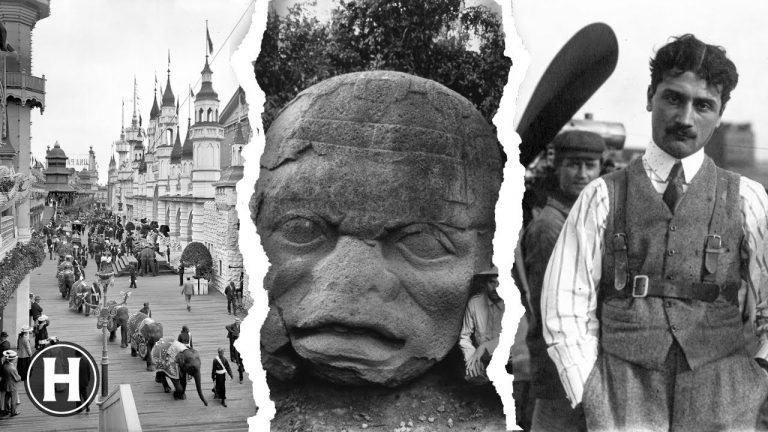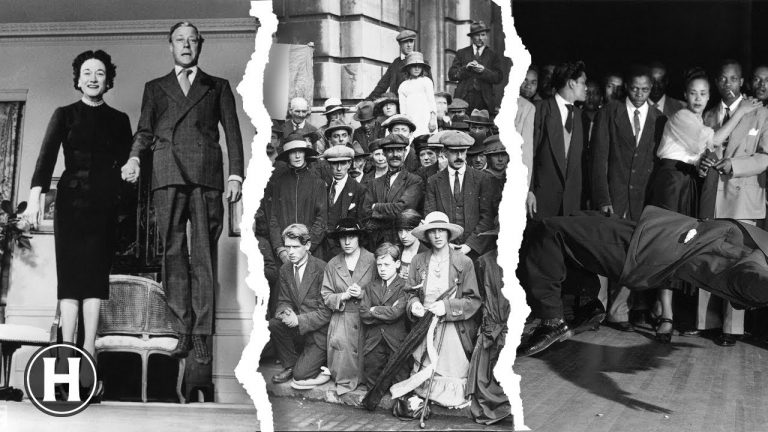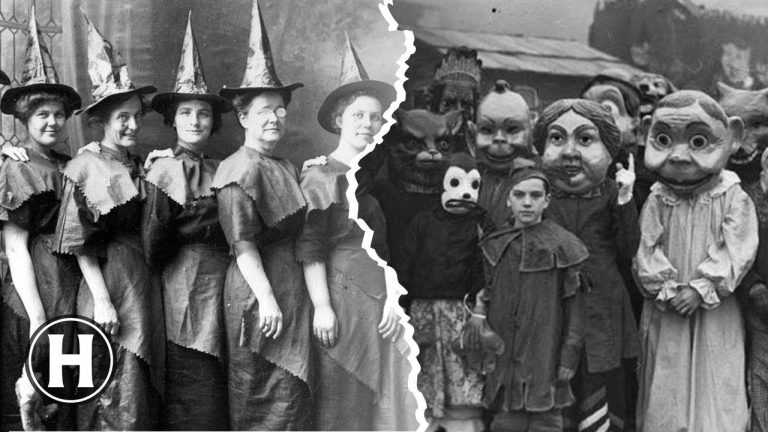Step back in time as we journey through remarkable moments in history. From Anne Frank’s school years to a poignant encounter between Stevie Wonder and blind children, crucial political gatherings, the wonders of aviation and innovation, noble traditions, the evolution of women’s roles in society, to powerful acts of civil defiance. This collection captures these epic narratives, immersing you in a photo-journey spanning over a century of collective memories.
Anne Frank at Montessori (1935)
Anne Frank attended the Montessori School in Amsterdam, which was only a few blocks away from her house. She attended primary school until 1941. Can you spot her? Let us know in the comments.
Stevie Wonder Visits Blind Kids (London 1970)
Stevie Wonder, the American singer, songwriter, and multi-instrumentalist, emerged as a remarkable musical talent in the late 20th century. Despite being blind from birth and growing up in inner-city Detroit, he showcased his exceptional musical abilities from the tender age of eight, becoming one of the most innovative figures in music.
Cairo Summit (1943)
In 1943, the leaders of the United States, Turkey, and the United Kingdom met in Cairo to discuss important matters. These leaders were Franklin D. Roosevelt, Ismet Inönü, and Winston Churchill.
4th Light Dragoons (1855)
This photograph, taken by Roger Fenton, captures officers of the 4th (The Queen’s Own) Regiment of Light Dragoons, posed in front of a hut. The officers, wearing military uniforms, served during the Crimean War. They are seen in a combination of sitting and standing positions.
John “Jammie” Reynolds: The Human Fly (1917)
John “Jammie” Reynolds was a daredevil known as “The Human Fly”. He was captured in this iconic photo climbing the building in Washington, D.C. without any safety equipment in 1917.
Jean-Francois Jonvelle (1980s)
Jean-Francois Jonvelle was a French photographer in the 1980s who captured natural, often nude, portraits of young women. His work was softer and more jovial than other fashion and glamor photographers of the time. He passed away in 2002 at the age of 58.
Mark Twain & Jo Jefferson with Tesla (1894)
Mark Twain and Joseph Jefferson were both present at Nikola Tesla’s South Fifth Avenue laboratory in 1894. One of Tesla’s achievements during that time was his work on wireless transmission of electrical energy, which he demonstrated through experiments at his laboratory in New York.
The Final Photo of President Roosevelt (April 11, 1945)
This poignant photograph, captured by Nicholas Robbins for Elizabeth Shoumatoff on April 11, 1945, portrays President Roosevelt at Warm Springs, Georgia. Franklin D. Roosevelt passed away on the subsequent day, April 12, 1945.
Prof. Jongbloed Explains Artificial Heart (1951)
Professor Jacob Jongbloed of Utrecht, Holland, presented his artificial heart machine to the Congress of Surgeons at the Sorbonne University in Paris, France. A bottle replaces the body, while blood circulates through pumps and an artificial lung. Oxygen is added, and a motor beneath the pumps maintains a rhythmic beat like a normal heart (August 30, 1951).
Queen Elizabeth II Coronation (2 June, 1953)
Queen Elizabeth II was the first monarch to be televised, with millions of viewers tuning in to watch her coronation on 2 June 1953. She ascended the throne at 25 after her father’s death on February 6, 1952. The delayed coronation followed the tradition of allowing sufficient time to mourn the passing of a monarch.
American Women Making Guns (1918-1919)
American women making Browning machine guns during WW1. 1918-19 – general view of polishing shop, Winchester Repeating Arms Co., New Haven, Connecticut
Bell X-2 #2 Nose Gear Collapse (1952)
The Bell X-2 #2 made history when it became the first aircraft to glide-land with a collapsed nose landing gear. Test pilot Jean Ziegler was still in the cockpit as ground crewmen stood by the aircraft. Tragically, the X-2 #2 was destroyed in an explosion later that year, killing Ziegler and another crewmember (1952).
Philippe Petit’s Twin Towers Walk (1974)
Philippe Petit, a French high-wire artist, famously walked on a tightrope between the Twin Towers in New York City on the morning of 7 August 1974.
Igor Sikorsky & VS 300 (1939)
Igor Sikorsky accomplished the inaugural tethered flight of the Vought-Sikorsky VS-300 prototype helicopter in Stratford, Connecticut on September 14, 1939. Lasting only 10 seconds, the flight showcased the helicopter’s controllability. The VS-300 became the first triumph in single main rotor, single tail rotor helicopter design.
Connie Mack: Phillies Manager (1911)
Connie Mack, born Cornelius Alexander McGillicuddy, was a manager of the Philadelphia Phillies for 50 years. He holds the records for wins (3,731), losses (3,948) and games managed (7,755). In 1911, his victory total was nearly 1,000 more than any other manager at that time, highlighting his remarkable success and longevity in the sport.
Detroit in 1940s (Michigan)
During the 1940s, Detroit, known as the “Motor City,” thrived with a booming automotive industry that drove its economy. The era witnessed social transformations, such as demographic shifts, labor movements, and advancements in civil rights activism. Detroit became a vibrant hub of innovation and cultural development, mirroring the dynamic changes of the time.
Jacqueline Kennedy Watches Debate (1960s)
Jacqueline Kennedy observed the televised debate between her husband, John F. Kennedy, and the Republican presidential candidate, Richard Nixon (1960s).
Girl Rejects Handshake, Ending Dictatorship (1979)
In 1979, a young girl declined to shake hands with João Figueiredo, the President of Brazil. The military dictatorship, headed by General Figueiredo, concluded on March 15, 1985, signifying Brazil’s shift to a democratic government following over two decades of military governance.
Rogers Commission at KSC (1986)
The Rogers Commission Report was the result of the investigation of the Space Shuttle Challenger disaster. Members of the Commission arrived at the Kennedy Space Center in 1986 to examine the evidence and write the report.

